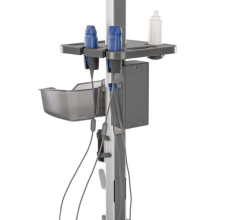
February 3, 2017 — For over 20 years, stress echocardiography (SE) has been widely used to help clinicians diagnose ischemic heart disease, in which coronary arteries have narrowed, leading to restricted blood flow and damage to the heart. However, in recent years, stress echocardiography has also become an established method to assess a much wider array of complex heart conditions, such as heart failure and valvular heart disease. A new document, The Clinical Use of Stress Echocardiography in Non-Ischaemic Heart Disease: Recommendations from the European Association of Cardiovascular Imaging (EACVI) and the American Society of Echocardiography (ASE), aims to establish guidance for how best to apply, perform and interpret SE for patients with a multitude of conditions.
The paper, a joint project between ASE and EACVI, will appear in the February issue of the Journal of the American Society of Echocardiography (JASE). ASE’s co-chair of the writing group, Patricia A. Pellikka, M.D., FACC, FASE, ASE past president and the director of the Mayo Clinic Echocardiography Laboratory in Rochester, Minnesota, commented, “This is the first guidelines document on the topic of stress echocardiography in non-ischemic conditions. It should be a valuable reference for practitioners and echocardiographers caring for some of the most complex and diverse patients.
The document outlines in detail the technical considerations and imaging techniques, as well as the value that stress echocardiography can add to the management of specific heart conditions other than ischemic heart disease. It details the use of stress echocardiography to help identify patients with valvular disease for whom intervention is truly needed, as well as to detect diastolic dysfunction, which is considered to be the main cause of heart failure in roughly 40 percent of patients with clinical heart failure. The document includes several useful tables summarizing techniques and advantages of stress echocardiography for specific conditions, as well as 27 figures to illustrate various concepts.
In conjunction with the publication of the guideline document, Pellikka will conduct a live webinar, including a question and answer section, on Friday, March 24, 2017 at 1:00 PM Eastern Time. The webinar will be available for free to all ASE members and open to all other clinicians for just $25; registration for the webinar will open in mid-February. This webinar, and all ASE-hosted guideline webinars, are available on ASEUniversity.org to facilitate education for those who cannot attend the live webcast.
The full guideline document is available on the Journal of American Society of Echocardiography (JASE) website. This document and all ASE Guideline documents are also available to the medical community at www.asecho.org/guidelines.
For more information: www.asecho.org


 March 24, 2025
March 24, 2025 








